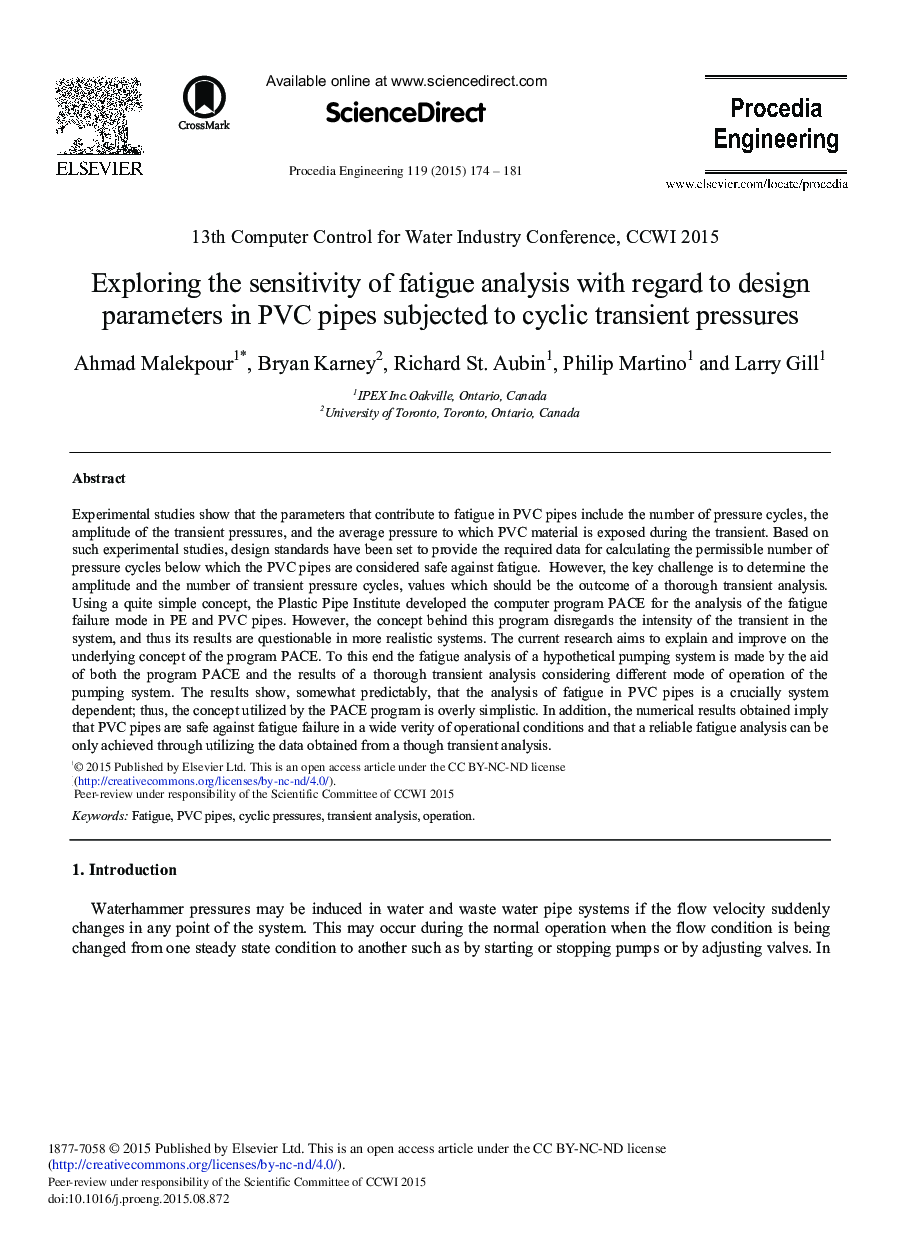| Article ID | Journal | Published Year | Pages | File Type |
|---|---|---|---|---|
| 855382 | Procedia Engineering | 2015 | 8 Pages |
Experimental studies show that the parameters that contribute to fatigue in PVC pipes include the number of pressure cycles, the amplitude of the transient pressures, and the average pressure to which PVC material is exposed during the transient. Based on such experimental studies, design standards have been set to provide the required data for calculating the permissible number of pressure cycles below which the PVC pipes are considered safe against fatigue. However, the key challenge is to determine the amplitude and the number of transient pressure cycles, values which should be the outcome of a thorough transient analysis. Using a quite simple concept, the Plastic Pipe Institute developed the computer program PACE for the analysis of the fatigue failure mode in PE and PVC pipes. However, the concept behind this program disregards the intensity of the transient in the system, and thus its results are questionable in more realistic systems. The current research aims to explain and improve on the underlying concept of the program PACE. To this end the fatigue analysis of a hypothetical pumping system is made by the aid of both the program PACE and the results of a thorough transient analysis considering different mode of operation of the pumping system. The results show, somewhat predictably, that the analysis of fatigue in PVC pipes is a crucially system dependent; thus, the concept utilized by the PACE program is overly simplistic. In addition, the numerical results obtained imply that PVC pipes are safe against fatigue failure in a wide verity of operational conditions and that a reliable fatigue analysis can be only achieved through utilizing the data obtained from a though transient analysis.
